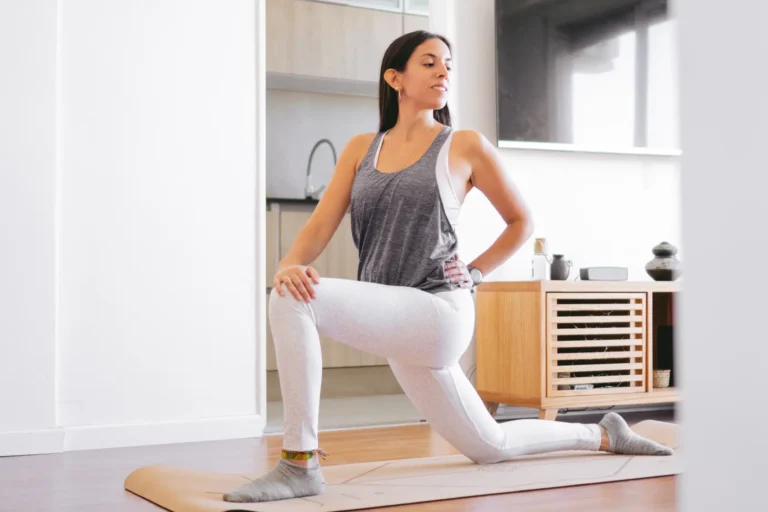Understanding Hip Pain and Its Causes
The hip joint is one of the most crucial joints in the human body as it supports our weight and allows us to move freely. When hip pain arises, it can significantly impact daily activities and overall quality of life. Understanding the underlying causes and symptoms of hip pain is the first step toward effective management and recovery.
Book your appointment today at Bull City PT’s Durham – Charlotte – Brier Creek offices.
Overview of Hip Pain
Hip pain can manifest in various ways, whether as a sharp, stabbing sensation or a dull, aching discomfort. It may be experienced in the groin, thigh, buttocks, or even referred to the knee or lower back. The pain can be acute, resulting from a sudden injury, or chronic, developing over time due to underlying health conditions.
Common Causes of Hip Pain
There are numerous potential causes of hip pain, ranging from muscle strains and tendon injuries to more serious conditions such as osteoarthritis or bursitis. Athletic activities falls, or accidents can lead to sprains or fractures, while prolonged wear and tear on the joint often results in degenerative changes over time. Additionally, inflammatory conditions such as rheumatoid arthritis or infections can also contribute to hip discomfort.
Another frequent source of hip pain is hip labral tears, where the cartilage surrounding the hip joint becomes damaged. These are often seen in athletes and individuals who participate in activities that require repetitive hip rotation or high-impact movements.
Symptoms and When to Seek Help
Symptoms of hip pain can vary widely, from persistent aching or stiffness to swelling, redness, and limited range of motion. If the pain is severe, persists beyond a few days, or is accompanied by other symptoms such as swelling, difficulty moving the leg, or fever, it is crucial to seek professional help. Early diagnosis and intervention can prevent further complications and guide effective treatment strategies.
In summary, hip pain should not be ignored, especially if it disrupts daily activities or sleep. Consulting a healthcare professional, such as a physical therapist, can provide a comprehensive assessment and a tailored plan to address the underlying causes and alleviate symptoms.
What Do Physical Therapists Do for Hip Pain?
When it comes to addressing hip pain relief, a physical therapist plays a crucial role. They employ a thorough and methodical approach to assess and manage your hip pain conditions.
Physical Therapy Assessment
During the initial consultation, a physical therapist conducts a comprehensive assessment. This assessment includes evaluating your hip joint’s range of motion, flexibility, and strength. They might observe your posture, gait, and how your body moves during daily tasks to pinpoint the underlying causes of your hip pain. Understanding the specific nature and root causes of the pain allows the therapist to develop a targeted treatment plan.
Individualized Treatment Plans
At Bull City PT, every individual’s needs are unique, thus our treatment plans are tailored specifically to each patient. The plan will encompass a combination of therapies that address your particular condition, lifestyle, and goals. Treatment often includes exercises to improve strength and flexibility, activities to enhance mobility, and strategies to enable you to perform daily tasks with ease. The aim is always to relieve pain as well as improve overall function and quality of life.
Manual Therapy Techniques
Manual therapy is a common method used by physical therapists to alleviate hip pain. At Bull City PT, therapists might use techniques such as joint mobilization or soft tissue massage to reduce pain and stiffness. These hands-on approaches help in easing muscle tension, enhancing circulation, and ultimately fostering a better range of motion. Manual therapy, combined with therapeutic exercises, accelerates recovery and supports long-term hip health.
A qualified physical therapist not only guides you through exercises and activities to relieve your hip pain but also educates you on how to maintain improvements and prevent future issues. By choosing Bull City PT, you are ensuring a path toward effective pain management and enduring comfort.
Exercises for Hip Pain: What to Avoid and What to Include
Exercises That May Worsen Hip Pain
When dealing with hip pain, it is crucial to recognize exercises that could potentially exacerbate discomfort. Activities such as high-impact sports, running on hard surfaces, or exercises involving deep hip flexion should be approached with caution, especially if the pain is persistent. Squats and lunges performed incorrectly can also strain the hip joint, leading to increased pain.
Individuals should be aware of their body’s limits and avoid pushing through pain. Consult with a physical therapist for a running assessment or advice on how to modify any exercise routine that might stress the hips and lead to more severe conditions.
Recommended Exercises for Hip Mobility
Maintaining and enhancing mobility is essential for alleviating hip pain. Gentle exercises focusing on flexibility and strength without adding stress to the hip joint are recommended. Activities such as swimming, low-impact aerobics, and cycling are beneficial for improving range of motion and reducing discomfort.
Stretching exercises like the piriformis stretch, butterfly stretch, and gentle hip rotations can help improve joint flexibility. Incorporating these into your daily routine can relieve stiffness and enhance overall mobility.
Safe Exercise Modifications
For individuals experiencing hip pain, modifying exercises to reduce strain is vital. Using support tools such as an elastic band can alleviate tension during stretching exercises. Another effective modification is performing exercises in a water-based environment, which reduces the gravitational impact on the hips.
Focused strength training under professional guidance can help in building supportive muscles around the hip joint, contributing to better stabilization and pain management. Engaging in controlled movements and maintaining proper form are critical in preventing further injury.
Physical therapists can provide personalized guidance on exercise modifications, ensuring they are tailored to your specific condition and capabilities.
What Is the Best Exercise to Relieve Hip Pain?
Top Recommended Exercises
When seeking to find the best exercise for hip pain, the focus is often on activities that combine both stretching and strengthening. Among these, the Clamshell and Hip Bridges are frequently recommended. These exercises are designed to activate and strengthen the hip abductors and glutes, which play a crucial role in stabilizing the hip joint. Apart from these, incorporating gentle yoga stretches like the Cat-Cow pose or specific Pilates movements can effectively enhance flexibility and reduce stiffness.
Benefits of Stretching and Strengthening
Engaging in hip pain relief exercises that emphasize stretching and strengthening can bring multiple benefits, including improved range of motion, enhanced muscle stability, and reduced discomfort. Stretching exercises help in lengthening the muscles and improving blood flow, which can reduce the tightness often associated with hip pain. On the other hand, strengthening exercises aim to build muscle endurance around the hip region, providing better support for the hip joint and reducing the likelihood of injury.
Expert Tips for Effective Practice
For those embarking on a journey to alleviate hip pain through exercise, it is essential to follow some expert tips for the best results. First, always warm up before exercising to prepare your muscles and prevent injury. Start with light-intensity exercises and gradually increase the difficulty as your strength and flexibility improve. Maintaining consistency is key and, ideally, exercises should be performed several times a week. Lastly, pay attention to your body’s response; stop any exercise if it worsens the pain, and consult a physical therapist if needed. By integrating these practices into your routine, you can experience more significant and sustained relief from hip pain.
NHS Physio Exercises for Hip Pain Relief
Commonly Prescribed NHS Exercises
One of the key approaches adopted by the NHS for managing hip pain involves specific physiotherapy exercises aimed at improving mobility and alleviating discomfort. The NHS typically prescribes exercises that are designed to strengthen the muscles surrounding the hip joint while improving flexibility. These exercises form the cornerstone of hip pain management, often recommended by healthcare professionals to facilitate recovery and enhance functional movement.
Some of the commonly prescribed NHS physio exercises include hip flexor stretches, bridges and leg raises. These exercises are selected not only for their effectiveness in addressing weakness and pain but also for their adaptability to various levels of pain and mobility conditions.
Guidance on Performing Exercises
Proper guidance on executing these exercises is essential to maximize their benefits and minimize potential risks of injury. Detailed instructions are usually provided by physiotherapists, who ensure that the exercises are performed with the correct form and technique.
The exercises should be started gradually, with modifications made according to the individual’s pain threshold and mobility constraints. It’s crucial to maintain a schedule of regular practice, progressively increasing the intensity as tolerated. Patients are encouraged to pay attention to their body’s feedback and avoid pushing through significant pain, which can exacerbate the condition.
Expected Outcomes and Benefits
The ultimate goal of incorporating NHS physio exercises into a treatment plan is to achieve significant relief from hip pain and regain a full range of motion over time. Regular practice of prescribed exercises can lead to improved muscle strength, heightened endurance, and greater joint stability in the hip region.
Besides alleviating existing pain, these exercises can also serve as preventative measures, reducing the likelihood of recurring injuries in the future. Consistent adherence to the prescribed exercise regimen brings about tangible improvements in daily mobility, allowing individuals to resume their normal activities with greater ease and comfort.
Effective Home Therapies for Relieving Hip Pain
Dealing with hip pain can be a challenging experience, but there are several effective methods that can be managed right from the comfort of your home. These methods can not only help in reducing pain levels but also enhance mobility and improve overall quality of life.
Home Exercise Routines
Relieving hip pain at home often starts with a series of tailored exercise routines designed to stretch and strengthen the hip muscles. Low-impact activities such as walking, swimming, or cycling are recommended to maintain mobility without aggravating the joint. Additionally, targeted stretches such as hip flexor and hamstring stretch aid in enhancing flexibility. Performing these exercises consistently helps alleviate stiffness and pain, ultimately facilitating smoother movement.
Use of Heat and Cold Therapy
Alternating between heat and cold therapy can be a highly effective way to relieve hip pain at home. Applying heat can soothe and relax the muscles while increasing blood flow, which promotes healing. Warm baths, heat packs, or infrared heating pads can be used for this purpose. In contrast, cold therapy, such as ice packs, can help reduce inflammation and numb the painful area. It is crucial to follow a balanced approach, applying each for about 15 to 20 minutes, ensuring there is a barrier like a cloth between the skin and the heat or cold source to prevent burns or frostbite.
Lifestyle Adjustments
Lifestyle modifications are also essential for managing hip pain effectively. Re-evaluate daily activities to identify any that might exacerbate pain and develop strategies to mitigate them. This might include weight management, as carrying excess weight places additional strain on hip joints. Additionally, incorporating ergonomic furniture can provide necessary support during daily activities, thereby reducing strain on the hip area. A commitment to good posture can also have significant impacts, minimizing unnecessary pressure on your hips.
Combining these home therapies can lead to substantial improvements in pain levels and mobility. However, it is important to progress at your own pace and consult with a healthcare professional if the pain persists or worsens.
Conclusion
Recap of Key Points
Managing hip pain effectively requires a comprehensive approach that combines professional guidance with personalized care strategies. We have explored various aspects of addressing hip pain, from understanding its causes to implementing safe and effective exercises. By paying attention to these fundamental elements, individuals can significantly reduce discomfort and improve their quality of life.
Throughout this article, the emphasis has been on understanding what drives hip pain and how to mitigate it using a blend of professional therapies and home-based solutions. From evaluating the specific exercises to avoiding to embracing strategies offered by physical therapists, every step is crucial in the journey to relief.
Encouragement to Consult Professionals
While home remedies and exercises can alleviate symptoms, it’s essential to consult with healthcare professionals like those at Bull City PT for a tailored treatment plan. Our expertise in physical therapy ensures that each patient receives care tailored to their unique needs, providing a structured path to recovery.
Engaging with a professional early on can prevent further complications, offering insights into advanced treatment methods and personalized exercises. Our knowledgeable therapists are adept at diagnosing the intricacies of hip pain and formulating strategies that promote healing and enhance mobility.
Inspiration for Ongoing Maintenance and Prevention
As you embark on your journey towards hip health, remember that an active and mindful lifestyle can be equally as crucial in maintaining pain-free mobility as the therapies themselves. Regular follow-ups with physical therapists, coupled with consistent application of advised techniques, form the backbone of successful upkeep and prevention.
Engaging in regular exercise, paying attention to posture, and incorporating protective measures during daily activities are vital tips for sustained hip health. Keep in mind the importance of balance between activity and rest, ensuring your muscles and joints recover and strengthen effectively.
At Bull City PT, we are dedicated to guiding you through every step of your recovery journey. Our commitment to quality care and innovative therapy approaches is unmatched. Experience expert physical therapy at Bull City PT’s Brier Creek location and let us assist you in achieving lasting improvements and a pain-free tomorrow. Schedule your appointment today and discover the difference professional care can make.







